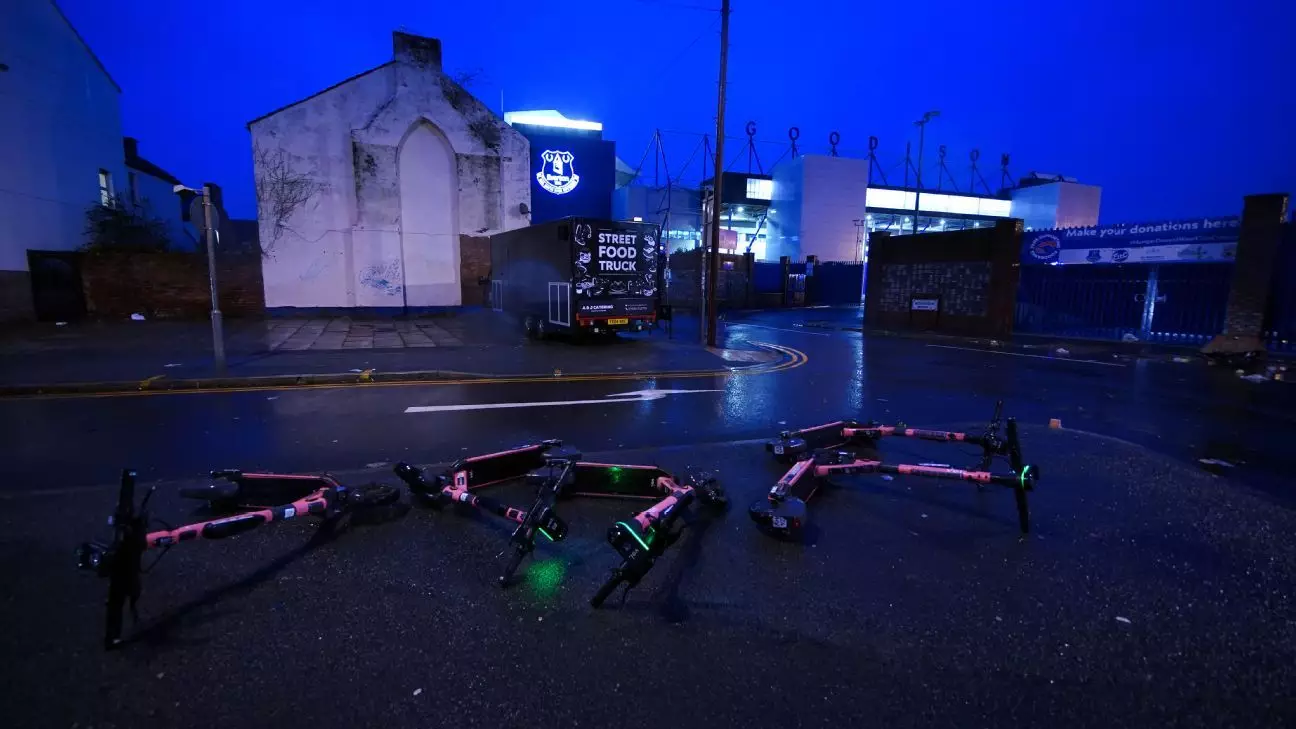Weather has always played an integral role in the dynamics of sports, especially in football where conditions can significantly impact the players’ performance and the safety of fans. A recent incident involving the postponement of the highly anticipated Merseyside derby between Liverpool and Everton due to severe weather conditions exemplifies this intersection between nature and sport. This article delves into the implications of such disruptions and the broader context of the Premier League landscape.
The scheduled clash between Liverpool and Everton, set against the backdrop of Goodison Park, was called off as the Merseyside region braced itself for the onslaught of Storm Darragh. With wind gusts predicted to reach an alarming 70 mph, the safety of supporters traveling to the stadium became a prime concern. Notably, the match was not only crucial for the intensity it brought as a local rivalry but also held additional significance as Everton’s last derby at Goodison before moving to a new venue at Bramley-Moore Dock.
In a decision made after consultations involving club officials and local authorities, the postponement was confirmed. Everton’s official communication emphasized the community’s safety, stating that the decision was made in the interest of fans, players, and staff alike. The sentiment of disappointment among supporters was palpable, but the prioritization of safety underscored the governance of the sport. Interestingly, the postponement raised questions about the logistics of rescheduling, including potential night games later in the season.
Safety Protocols in Professional Sports
The decision to postpone the match reflects the robust safety protocols that professional sports leagues must adhere to. Weather-related postponements are not uncommon; however, they necessitate swift communication and decision-making from club officials and governing bodies. The involvement of local police and city council representatives in discussions about the match illustrates the collaborative effort required to ensure public safety.
The amber severe wind warning in place until early Sunday highlighted the potential dangers associated with travel during such conditions. Fans and families planning to attend the game would have faced significant challenges navigating to the stadium, prompting necessary precautions. While enthusiasts typically look forward to such fixtures, the responsibility of safeguarding lives often takes precedence.
As the postponement unfolded, Liverpool remained in a commanding position atop the Premier League table, holding a seven-point lead. However, with Chelsea and Arsenal poised to potentially narrow that gap with victories later in the day, the situation created a unique tension. The on-field implications of the postponement extended beyond community safety; it influenced the title race and league standings.
While the Merseyside derby is one of the season’s marquee fixtures, every match carries weight in a fiercely competitive league. For Liverpool, maintaining a lead while navigating unexpected interruptions will be pivotal in their quest for the title. In this context, the impact of external factors like weather plays a significant role in the strategies employed by teams.
The situation surrounding the postponed match is emblematic of broader challenges faced by leagues worldwide. The ability to adapt to unforeseen circumstances is paramount, not only for the teams involved but also for the leagues that govern them. With increasing concerns around climate-related events impacting sporting schedules, leagues may need to consider more innovative contingency plans in the future.
Furthermore, the communication strategies employed during such events can set a precedent for how teams and officials engage with their fanbases. Clear, timely updates can mitigate frustration and foster goodwill, which is crucial when balancing the interests of various stakeholders.
The postponement of the Merseyside derby due to Storm Darragh served as a reminder of the perennial battle between sports and nature. While the safety of all involved remains the foremost priority, the implications for the teams competing and the league as a whole highlight the nuanced relationship between unpredictable weather events and professional sports. As fans await a new date for this storied fixture, it serves as an opportunity for player management, logistical planning, and a reaffirmation of community ties within the sport.

